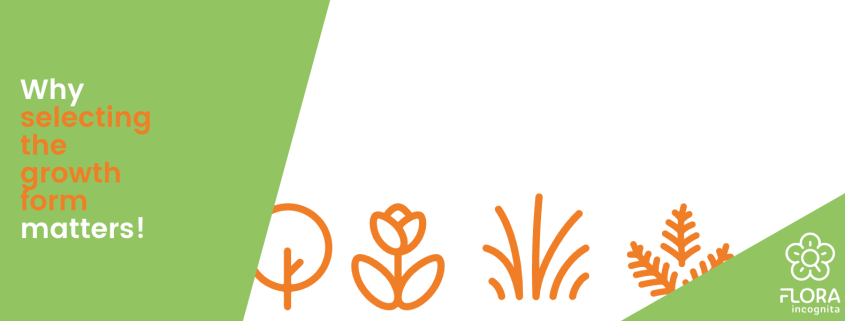Identify trees, flowers, grass, fern, and cacti with the right characters
This article answers the question why it makes sense to select the correct growth form when identifying plants with the Flora-Incognita app.
Why select a growth form?
If you tap on ” Identify plant”, you will see a selection of images for certain growth forms in the lower area: flower (preselected), grass, tree, cactus and fern. Selecting the right growth form is important because for each of them different parts of the plant are better suited for identification. For example, on a tall tree it is difficult to photograph the flowers, while on a dandelion it makes little sense to ask for a picture of the bark. \nIf you are not sure what you are looking at, you can select the category “Other”. The identification will work here too, but may not be as precise. Also, you may be asked for an odd plant perspective.
Botanical growth form: Flower
This category is preselected because most people want to identify a “flower” or a shrub with Flora Incognita. Herbaceous plants do not lignify. There are annual, biennial and perennial herbaceous plants, but all flower and fruit only once before they eventually die. Shrubs are smaller than 2 metres and do not have a single, woody stem – which distinguishes them from trees.
Botanical growth form: Tree
Trees are characterised by their longevity and lignification; they also flower and fruit many times. They always have one stem that branches out to form a crown. Due to their size, leaves, flowers or fruits are often difficult to reach. Also, most of them flower only for a short time, which is why we ask for photos of leaves, bark or fruits, depending on the season, which are still good for identification even after they have fallen to the ground.
Botanical growth form: Grass
Use this category for grasses and sedges, which are characterized by long, thin leaves with parallel running nerves and lack of petioles. Their flowers are inconspicuous, sitting in spike-like or panicle-like inflorescences, such as those found on cereals, which are all grasses. At first glance, these species are difficult to distinguish, so it is important to get close. Especially the ligule, which is located between the leaf and the stalk, and single flowers are important for identification. Several very detailed and informative photos are necessary for a reliable identification.
Botanical growth form: Fern
Ferns often consist only of a basal rosette of leaves or individual leaves (fronds) that unroll with a fiddlehead. Since ferns form neither flowers nor fruits, they must be identified by their fronds. On their undersides, many species have conspicuous elevations (sori), in which the spores for reproduction are formed. The shape and arrangement of these elevations are often typical for the species. This makes them essential for identification. If fronds have no spores, they are sterile. These then often look different than the fertile fronds, although they belong to the same plant.
Botanical growth form: Cactus
Cacti come in a variety of shapes and sizes. Almost all are perennial shrubs (sometimes trees) whose stem has been transformed to store water. Young seedlings of cacti bear spines – transformed leaves – but some of these are shed later. The spines are formed by so-called areoles, specialised structures that are an important identifying trait of cacti. Besides spines, areoles also form flowers. Adult cacti can have a diameter of only a few centimetres – or grow up to 15 metres high.

